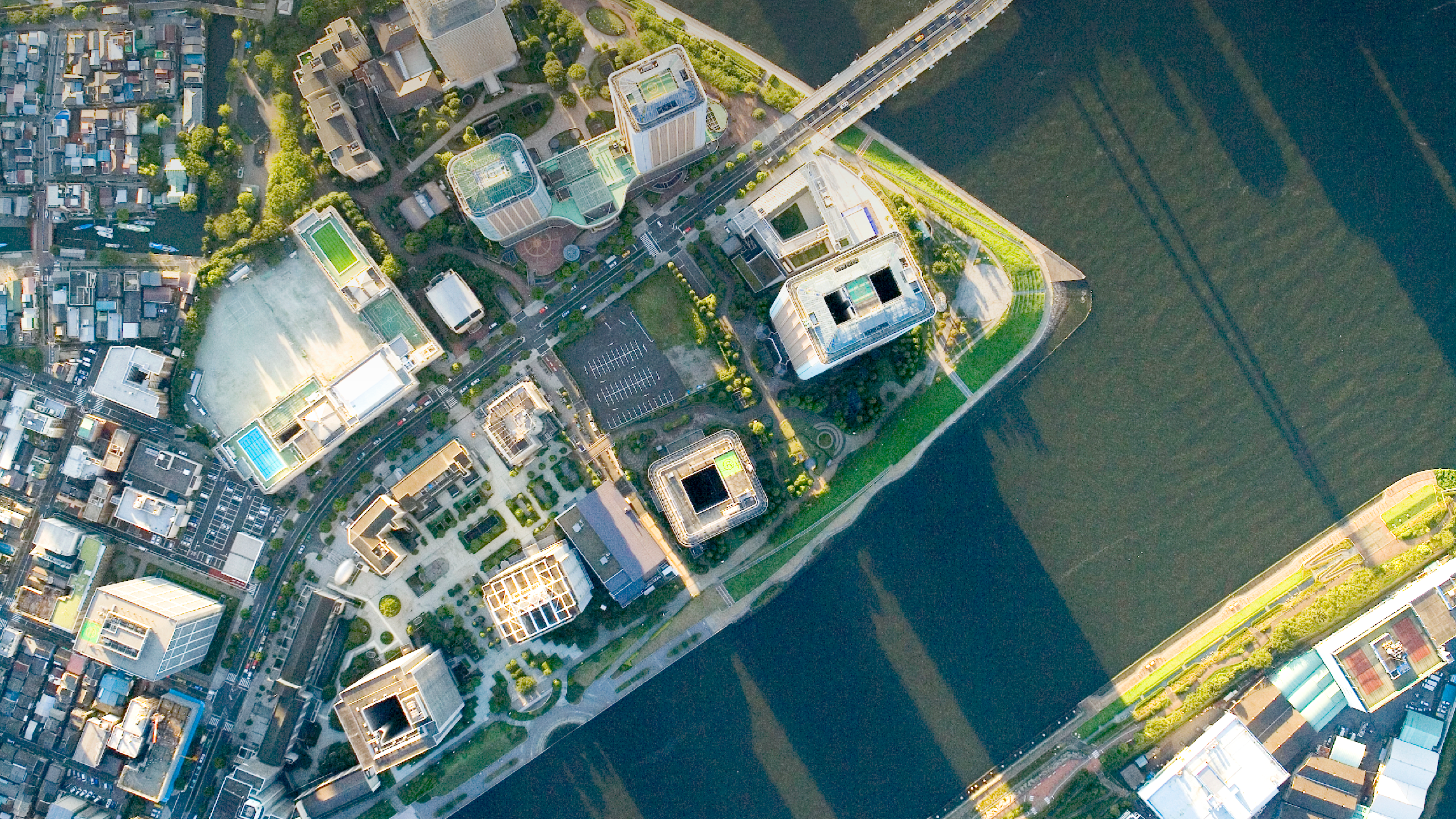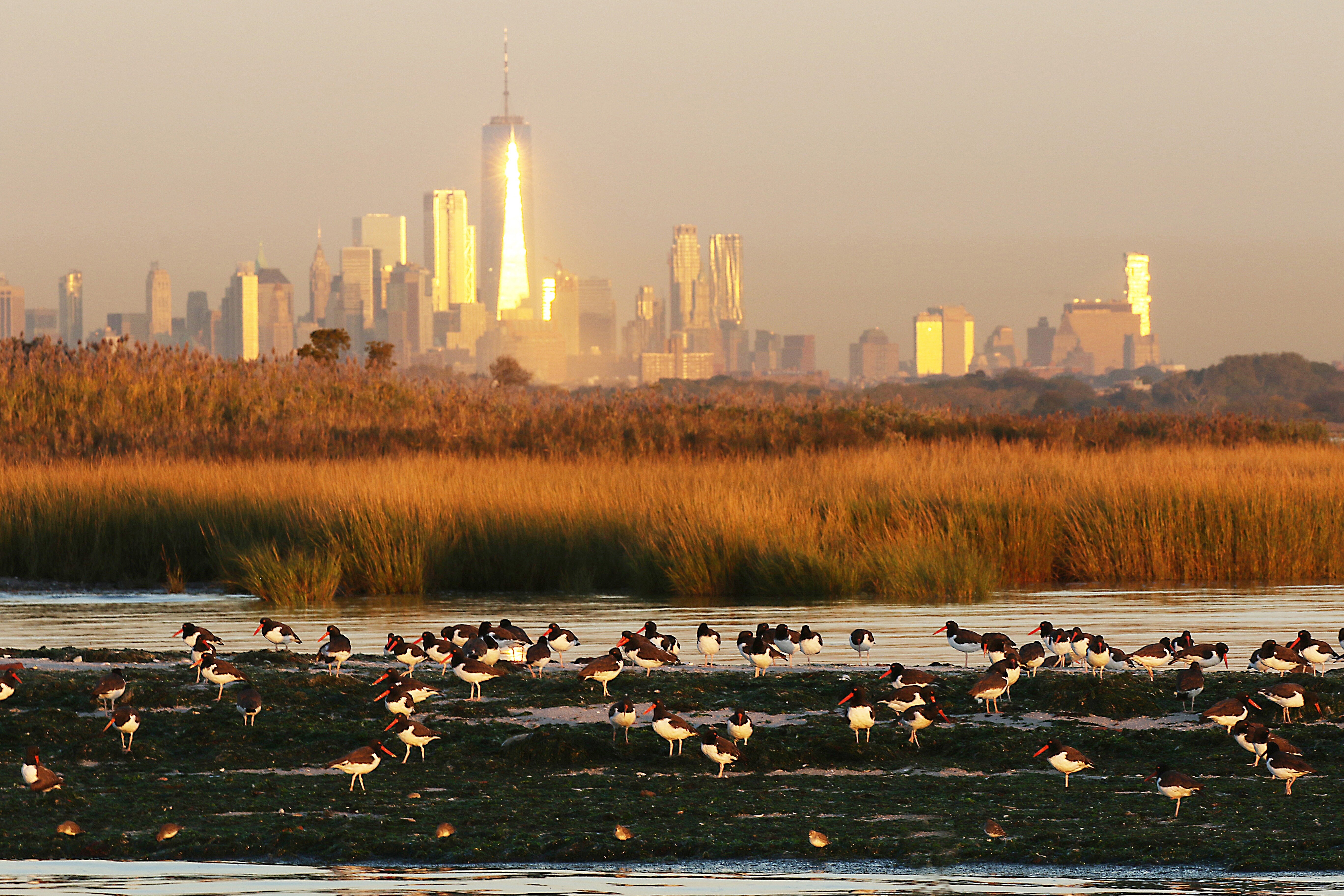‘Sponge cities’ can help protect against flooding. Here’s how
Sponge cities use their natural resources to absorb water and release it more slowly into lakes and rivers, helping to prevent flooding.
Image: ChapmanTaylor
Stay up to date:
Long-Term Investing, Infrastructure and Development
Listen to the article
This article has been updated.
- The 'sponge city' concept, pioneered by landscape architect Kongjian Yu, uses natural and engineered systems to absorb rainfall and prevent flooding.
- Cities like Copenhagen are actively engineering solutions after climate disasters, while others like Auckland are recognized for their natural 'sponginess'.
- Mitigating urban flood risk is a vital climate adaptation strategy for the world's growing urban populations, as the World Economic Forum points out in its Delivering Climate-Resilient Cities report.
In just two hours on 2 July, 2011, a torrential, once-in-a-millennium storm deluged Copenhagen, Denmark, leading to almost $2 billion in damages. The disaster was a wake-up call, pushing the city to transform itself into one of the world's most ambitious "sponge cities" – a revolutionary approach to urban design that prepares for a future of extreme weather.
This "sponginess," or a city's ability to absorb rainwater, is a key measure of climate resilience. Some urban centres, like coastal Auckland, New Zealand, which receives heavy rainfall, benefit from natural attributes like abundant parks and green space that help excess water drain away quickly. Others, like Copenhagen, must proactively engineer solutions in response to growing climate threats. By weaving together green spaces with innovative infrastructure, sponge cities are becoming a critical model for urban survival in the 21st century.
What’s the World Economic Forum doing about climate change?
So what is a sponge city?
The concept is attributed to Chinese landscape architect Kongjian Yu and eventually became part of China's urbanism policy in 2014. He has since been awarded the 2023 Oberlander Prize for his work addressing climate change-accelerated urban flooding.
Having grown up in rural China, Yu developed an awareness of the seasonal movement of natural waterways and the role of vegetation in slowing their course. But as he explained to the Cultural Landscape Foundation behind the Oberlander Prize, it was witnessing the impacts of "grey infrastructure" and pollution on delicate local irrigation networks that drove him towards developing the sponge city philosophy.
Based on longstanding Chinese irrigation practices, the concept utilizes natural drainage systems in urban sites to reduce the likelihood of flooding, water shortages and the urban heat island effect, and it is now being used all over the world.
Accept our marketing cookies to access this content.
These cookies are currently disabled in your browser.
Which cities are sponge cities?
Auckland tops a list of "spongy" cities, according to research by professional services firm Arup. Sponge cities work in tune with nature to quickly soak up heavy rainfall, rather than solely relying on grey infrastructure like pipes and pumps.
A city’s sponginess is affected by the balance between blue (ponds, lakes), green (grass, trees) and grey (buildings, hard surfaces) infrastructure. Soil types and vegetation, as well as the water runoff potential, also have a role to play.
Sandy soils are generally spongier than more clay-based soils, but the depth of the soil and the depth to the water table also have an impact. If the groundwater table is close to the surface, this reduces the sponge capacity of the soil.
Despite being New Zealand’s most populous urban area, Auckland is also rich in green space. Its houses often have decent-sized gardens, and there are a number of large parks.
Half of Auckland’s land is covered by green or blue infrastructure. This was one of the highest percentages in Arup’s report, only marginally behind Nairobi in Kenya.
While Nairobi’s grasslands make it a comparatively green city, it has a higher runoff potential than the other cities analyzed, because of a high percentage of clay within the soil. This makes it a slightly less good sponge city.
The least spongy city that Arup analyzed was Sydney in Australia, which has just 24% green or blue space, with many parks located outside of the city. The centre of the city is largely built up and has impermeable concrete surfaces as a result. In addition, Sydney has a moderately high runoff potential, with a fairly clay-rich soil.
Copenhagen: A case study in action
In contrast to cities assessed for their natural sponginess, Copenhagen, Denmark, provides a leading example of a city proactively building itself into a sponge. Spurred by a catastrophic flood in 2011, the city launched its "Cloudburst Management Plan" to protect against extreme rainfall and sea-level rise. The plan masterfully combines green infrastructure, like parks designed to hold water (Enghave Park) and permeable public squares (Karen Blixens Square), with massive grey infrastructure, such as large subterranean tunnels to store and redirect storm runoff. This hybrid approach has made Copenhagen a global model for climate adaptation.
Other recent initiatives include Bangkok’s Benjakitti Forest Park and Sanya’s wetland restorations, along with sponge city planning in Berlin and Jakarta, showing global momentum in adapting urban landscapes for flood resilience.
How can sponge cities prevent floods?
Sponge cities are able to soak up excess water and release it more slowly back into rivers and water systems.
Climate change is already having an impact on our weather systems, bringing about more flooding and heavier rainfall, as well as droughts. The impact of this extreme weather will be greater the more the planet warms.
Up to 40% of global weather-related disasters are linked to flooding, according to the latest data from the United Nations.
We need to measure and place more value on green and blue infrastructure – trees, grass and ponds – Arup argues, saying that we even need to design cities with sponginess in mind. Nature-based solutions to climate change are on average 50% more cost-effective than engineered alternatives, and deliver 28% more added value than grey infrastructure.
Demand for housing is placing increasing pressure on urban green spaces, affecting cities’ sponginess. But urban centres from Shanghai in China to Cardiff in Wales are factoring floodwater management into their planning. Shanghai’s rivers are being recruited to help it better tackle its urban drainage problems, and in Cardiff, “rain gardens” have been introduced to help prevent rainwater from overwhelming sewage systems.
With around 4.4 billion people living in cities, mitigating the impacts of increased rainfall and flooding through innovative urban planning is therefore vital, as the World Economic Forum's Delivering Climate-Resilient Cities report points out.
"Cities can provide greater protection to residents and assets against the impacts of climate change and natural hazards by investing in climate-resilient infrastructure solutions," it says.
Accept our marketing cookies to access this content.
These cookies are currently disabled in your browser.
Don't miss any update on this topic
Create a free account and access your personalized content collection with our latest publications and analyses.
License and Republishing
World Economic Forum articles may be republished in accordance with the Creative Commons Attribution-NonCommercial-NoDerivatives 4.0 International Public License, and in accordance with our Terms of Use.
The views expressed in this article are those of the author alone and not the World Economic Forum.
Related topics:
Forum Stories newsletter
Bringing you weekly curated insights and analysis on the global issues that matter.
More on Urban TransformationSee all
Kate Whiting
November 11, 2025
Jeff Merritt and Vivian Brady-Phillips
November 6, 2025
Jeff Merritt and Andras Szorenyi
November 3, 2025
Marielle Anzelone and Georgia Silvera Seamans
October 31, 2025






